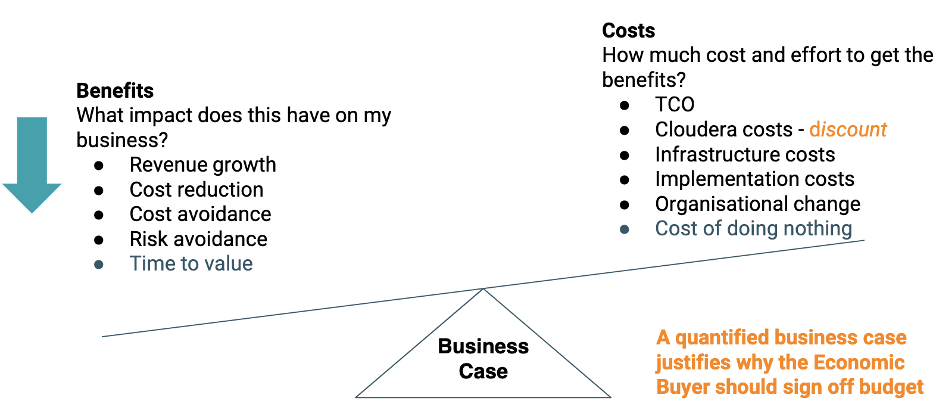As we move further into the digital age, we continue to see a growing emphasis on data-driven decision-making. And as a result, there has been a surge in the development of new products, tools, and platforms competing to help businesses analyze and utilize more data, more effectively. Given the number of competing solutions along with new economic-driven constraints on capital in most industries, data executives need to be able to make a compelling business case for new investments in data and analytics solutions. One method of determining whether an investment is right for your organization is using a value calculator.
You may be familiar with the concept of a value calculator. It is a formula designed to help businesses assess the potential value of a new investment or initiative and typically has been used for ‘business investments’ such as a new marketing campaign, or building a new manufacturing plant. However, given the competition for capital or budget, this must also be applied to data and analytics spend. By using a simple equation, the value calculator provides a quantitative estimate of the potential return on investment (ROI) of a particular initiative. The calculation can be simplified as:
ROI = Net benefits / Cost
To keep it simple, if for example the cost of a new analytics tool is $1 million and the data team can run 5 projects this year on it, and the average project value is $1 million, the net benefit would be $4 million for an ROI of 400% in the first year. Given this, the company may be sure they’ve made a smart investment. However, this model doesn’t look at the whole picture – it’s overly simplistic and not flexible enough for the way we do business these days. What if customized coding is required to integrate the new tool? What if the difference in security and governance requires additional system administrators? What if this creates a new data silo, etc.?
What is needed is a holistic model that balances multiple factors – for instance, while money is obviously still important, it’s not all about the short-term impact on the bottom line. Resilience, risk reduction, and especially business agility are very important too. After all, projects or use cases will continue to pop up that we can’t possibly predict, and the future flexibility to move quickly on these use cases will be a business game changer.
The new value calculator looks less like an equation and more like weights balanced on a scale.

Cloudera
“Customers do not buy solely on low price. They buy according to customer value, that is, the difference between the benefits a company gives customers and the price it charges. More precisely, customer value equals customer perceived benefits minus customer perceived price,” said McKinsey & Company.
While cost is still a key factor, the new model asserts that it’s not always the better option to get the tool at the lowest price. Value is all about the cost/benefit analysis. This model considers hidden costs not included in the price tag, like risk, implementation costs, infrastructure costs, security costs, organizational changes, vendor lock-in, and the cost of doing nothing at all.
To get the maximum value, it’s a far better strategy to maximize the number of use cases you can get out of a tool rather than considering the first use case as a standalone. For instance, can your potential tool work for both cloud and on-prem data? Is the tool limited to a specific type of data? Can the datasets or source of data be easily expanded?
Data executives have to balance two disparate goals, manage cost but increase the usability of data, thereby maximizing the value creation potential of a company’s data assets. To achieve these goals, we’ve found that it’s exponentially more valuable to work on a hybrid data platform. The idea of workload portability is that we can dynamically manage workloads where they are best suited, rather than following the recent trend of heading straight for the cloud.
And your options come with different price tags, so it may be more effective – not just for cost but also process, computing power, etc. – to run part of your workload on GCP and part on AWS, for example. And keep some of your workloads on premises where they are handled best.
Cloudera is uniquely positioned to do this effectively as the only hybrid data platform to help you manage data anywhere – on-prem and in any cloud – across the full data lifecycle. Meaning your modern data infrastructure can efficiently run workloads on-prem, in a private cloud, or public cloud without any hiccups – and move between them if and when your circumstances change.
We at Cloudera know that our solutions enable our clients to generate significant value, transform their competitive position, etc. As such, this value approach is baked into how we are taking Cloudera’s new products to market. Rather than endeavoring to be the lowest-priced option on the market, we show our customers how they can get the maximum value out of our tool by uncovering its many potential use cases within an organization. We know value is unique to each customer situation and their needs.
It’s a balancing act.
Learn more about CDP.
Data Management
Read More from This Article: The new value calculator: Levers for business optimization
Source: News


